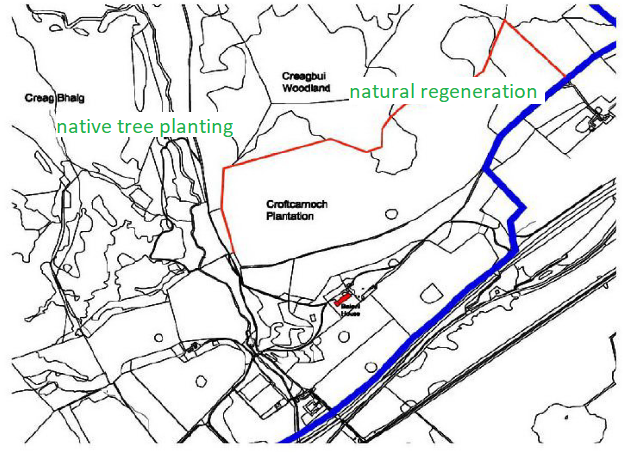
In September the Balavil Estate submitted a Prior Notification to Highland Council to upgrade/create 8 roads AFTER it had started construction work on one of them (see here). By the time of that post Balavil had agreed with the Cairngorms National Park Authority to suspend work on the new road and they had also withdrawn their Prior Notification to Highland Council. This post takes a look at what has been happening since, including a retrospective planning application for the new road which had been constructed unlawfully which is currently being considered by the Cairngorms National Park Authority (see here for all planning papers).
Background to the retrospective planning application
In early October Dave Morris and I visited Balavil and met with the estate’s managers, Jack Campbell and Gary Culpan, who were kind enough to show us around and explain what they are trying to do. Balavil has been under new management for the last year and Jack and Gary are, with the support of the owners, changing how the land is managed and renovating a number of old but delapidated buildings.
While their intention at present is to continue with grouse shooting on the middle third of the estate (the estate is long and thin), they told us they have stopped all muirburn and trapping. The number of gamekeepers has reduced from three to one. That is a major change and should be applauded. Interestingly this has not so far, apparently, resulted in any fall in grouse numbers, though we were told the numbers of red grouse shot have historically been low compared to other estates.
Balavil has also decided to manage most of the lower part of the estate – where the new roads are proposed – as woodland. Their plan is for a mix of commercial forest, natural regeneration around the old Caledonian pines on Creagbui and planting on Creag Bhalg (see top map).
The decision to create a larger woodland area has enabled the estate to remove fences around existing blocks of woodland. Instead they are building new fences running across the top of the forest area and along the boundary with the neighbouring estate:
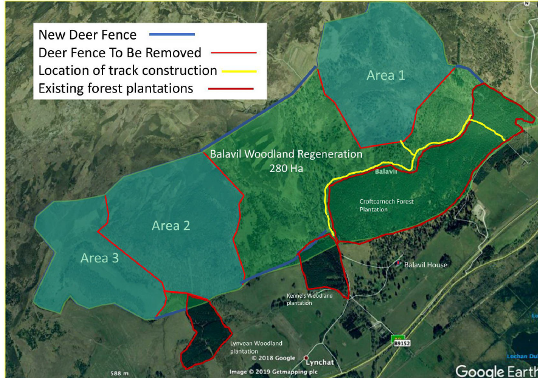
The reason the estate is building/retaining fences around the woodland boundary is because there are too many deer in the area for natural regeneration or planting to be successful without them. We were told that the estate had met the targets set for deer culling by their local deer management group. It appears, however, these are too low to enable trees to grow with fencing. The wider problem more progressive estates face at present – and Balavil appears to be moving into that category – is that under the current forest subsidy regime landowners can get grants to put up fences but not to cull deer.
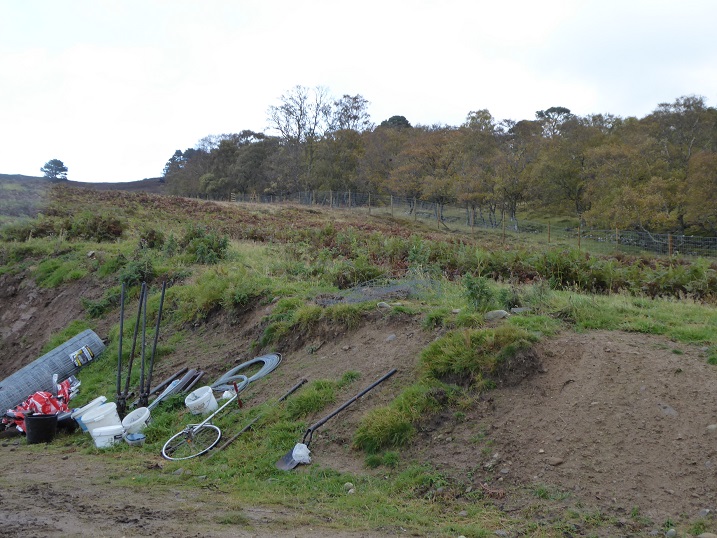
These changes in land management are positive and represent, I believe, a move towards how land in the National Park should be managed. The new managers don’t come from a traditional estate management background and have been able to take a fresh look at how the estate is managed. Access is being encouraged throughout the estate. They have also engaged expert advice in the form of Trees for Life’s commercial arm which is advising on woodland management and restoration. All this is very welcome and a contrast to how the estate was managed previously.
The retrospective planning application for the new road
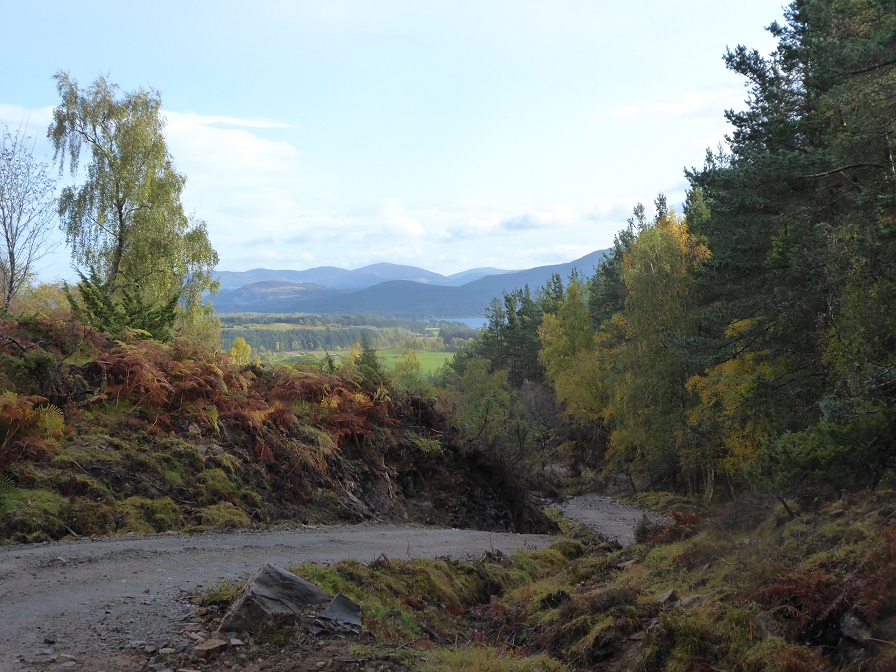
I found it refreshing at our meeting to hear the estate managers say that they should not have started work on this road without Planning Permission. It was good to hear too they were committed to working with the Cairngorms National Park Authority to address the issues.
We were told the reason why the new road was needed was to enable the Croftcarnoch Scots Pine plantation to be thinned. It had had almost no management since it was planted and as a result the trees were spindly and the timber of low value. The road would facilitate more active forest management, increase the value of the timber and provide income for the estate. A wish to get on and do this contributed to the estate engaging contractors to do the work without any form of planning approval.
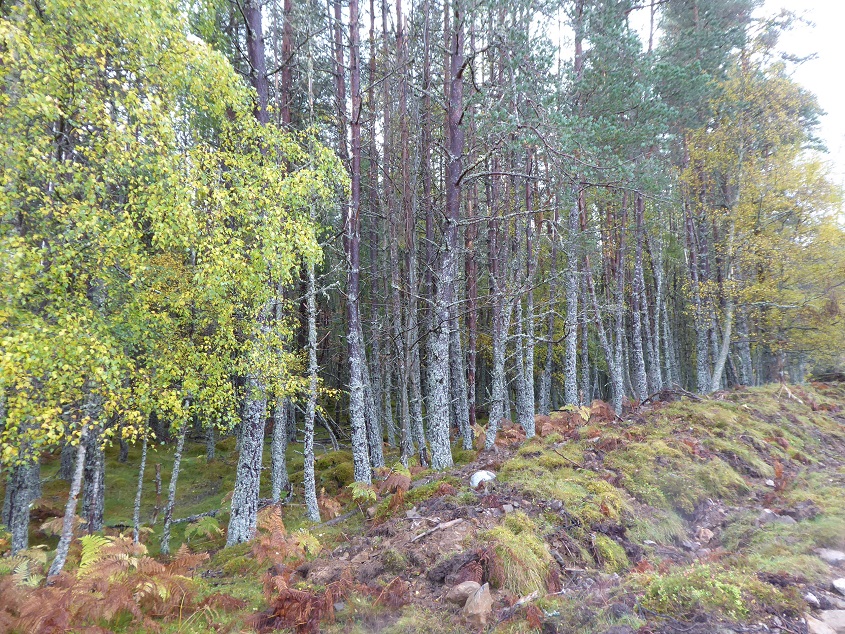
The retrospective planning application provides some further evidence for why the new road might be needed:
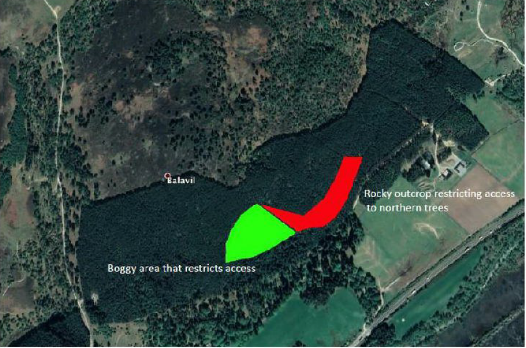
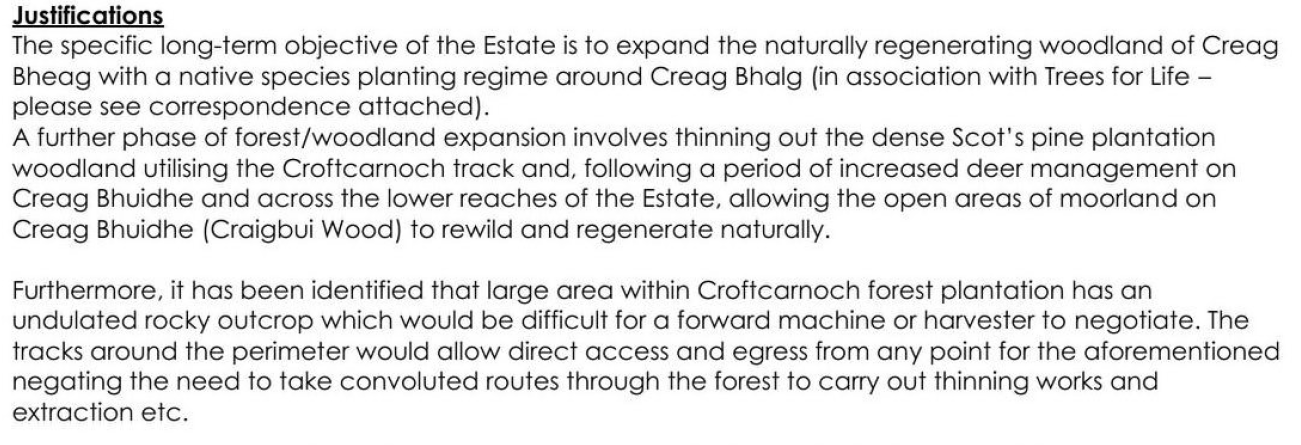 This appears reasonable to me.
This appears reasonable to me.
The accompanying ecological survey (on planning portal – see link above) is another matter. This claims on the one hand that the sides of the road are re-vegetating well post construction but also that if the CNPA forced the estate to remove the road the land would take years to recover! Both cannot be true. The survey also, as I read it, suggests that the new road and associated ditches will help drain water away from the wood and prevent it from flooding. If true, that would appear to suggest that the road itself will be at serious risk of erosion (see below) which in turn would create a further set of problems. To me the survey read as far from objective and added little to the planning application.
Having been driven along the road, I have the following observations:
- The wider landscape impact of the road is minimal as almost all of it is through trees and the short section that isn’t should be screened in future
- The construction of the road has had an adverse impact on what is an area of lovely native woodland next to the plantation. The restoration, which has been put on hold depending on the outcome of the planning application, still has some way to go as you can see from the planning documents. However, within the context of the overall plan to increase woodland cover, this loss should be more than offset in future. The question therefore is less whether a road is acceptable in this location and more about whether it can be constructed/restored to merge into the landscape.
- In that respect, the planning application does contain detailed plans including some for how culverts will be constructed – something which is not usually included in Planning Applications. That too is welcome.
There are however two significant issues which need to be addressed:
- One section of the road is too steep (see photo above). I raised this at our meeting and to the estate’s credit the planning application clearly states that this section of track contravenes SNH’s Best Practice Guidance on Constructed Tracks in the Uplands. The Estate’s argument is a less steep track would be significantly longer and do more damage to the native woodland. Their proposed means of addressing the oversteep track is to repair it as needed. Unfortunately, this will add material to the road which will then get washed downhill. Constructing water bars across the road, which is not mentioned as an option, might reduce the level of damage in future but not stop it. This issue needs to be addressed BEFORE the CNPA grantsThe planning permission.
- The second issue is the spur off the road that the estate wishes to keep to feed pheasants:

No justification is provided for why pheasant feeders should be located here and therefore why this further section of road is needed. The CNPA should question this, not least because in my view they should not be allowing the release of non-native species into the National Park as they do at present.
Approval of prior notification for two track upgrades
After withdrawing its Prior Notification for eight tracks (map in previous post – see link above), Balavil submitted a revised prior notification to Highland Council for two track upgrades (see here). These were approved in October. Balavil alerted me that these Prior Notifications were being submitted and I did not cover them on parkswatch as they generally appeared reasonable: the tracks are not new and the upgrade work looks well designed.
Its worth commenting further, however, on the process. Under current planning law agricultural and forestry roads are generally counted as permitted developments which don’t require full planning permission but do need to be notified in advance to the Planning Authority. In the report which granted “prior approval” (see here), Highland Council officers state that the original application provided no evidence that these road upgrades were for forestry purposes – hence perhaps why they had been withdrawn. The report goes on to say that the estate had now provided evidence that the roads do fall under Class 22 – forestry – and were to be used to remove timber from existing plantations.
The proposed width of the upgraded roads is far narrower than that allowed under the UK Forest Standard, as endorsed by the Loch Lomond and Trossachs National Park Authority (see here). Instead Balavil follows SNH guidance on Construction of tracks in the Uplands, which also covers forest tracks, and is far more appropriate for National Parks. They deserve congratulations for this.
One wonders, however, if they had decided to build a 6m wide road as allowed by the UK Forest Standard (and is happening across the Loch Lomond and Trossachs National Park) whether the CNPA would have called in the application from Highland Council?
Part of the problem is that there is no proper guidance/rules on what type of forest road is appropriate where. Instead, under the Prior Notification system as long as a landowner can show a road is for forestry purposes the Planning Authority cannot refuse it.
Parkswatch has argued that the solution to this is to remove all NEW roads from permitted development system. This would allow planning authorities to determine what type of forest road was acceptable where, and use the Prior Notification system for track upgrades and maintenance work – as proposed here. Once a land manager had developed a specification for such work, it could then be re-used, minimising the amount of work for all. From talking with Balavil, I believe such a change would be welcomed by more progressive estate managers.
For over 25 years I have been the owner of a holiday home at Lynchat, on the edge of Balavil. We have been privileged with easy access to these wild moorlands, including a lovely circuit up the front of Creag Bhalg, then down the heathery slopes to the existing main estate track, and back to Lynchat. These walks often deliver hares, Black and Red Grouse and bird life including Eagles and Peregrine.
Walking this route last week, I was shocked at the extent of planting on the slopes of Creag Bhalg which clearly will exclude this as walking ground in the future, and will eradicate the wildlife I am accustomed to. Willow Warblers are not an adequate replacement.
I was alerted to your work, and to your very considered report on Balavil which focuses on roads. I am most interested to hear your views on the negative impact I have described above and whether you believe this is wholly positive to Balavil. Speaking from my own point of view, I have lost a fabulous and wild amenity.